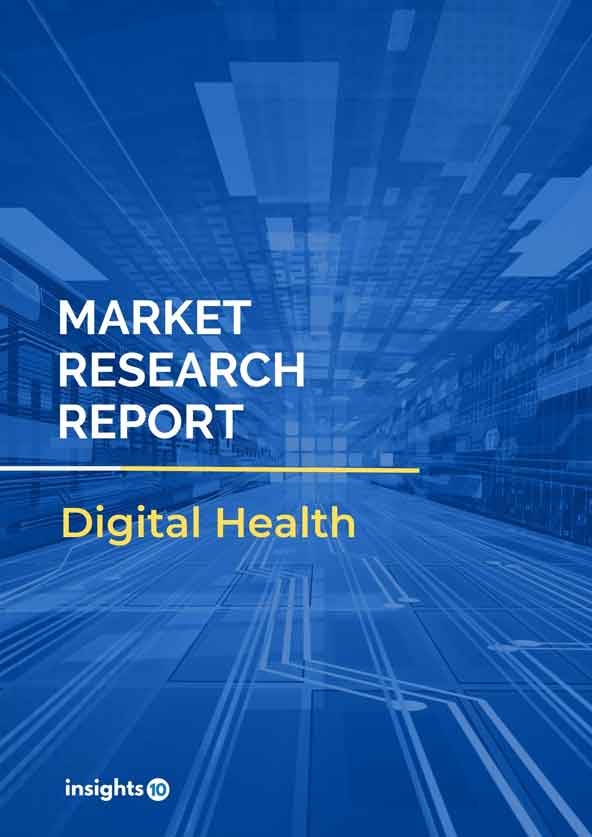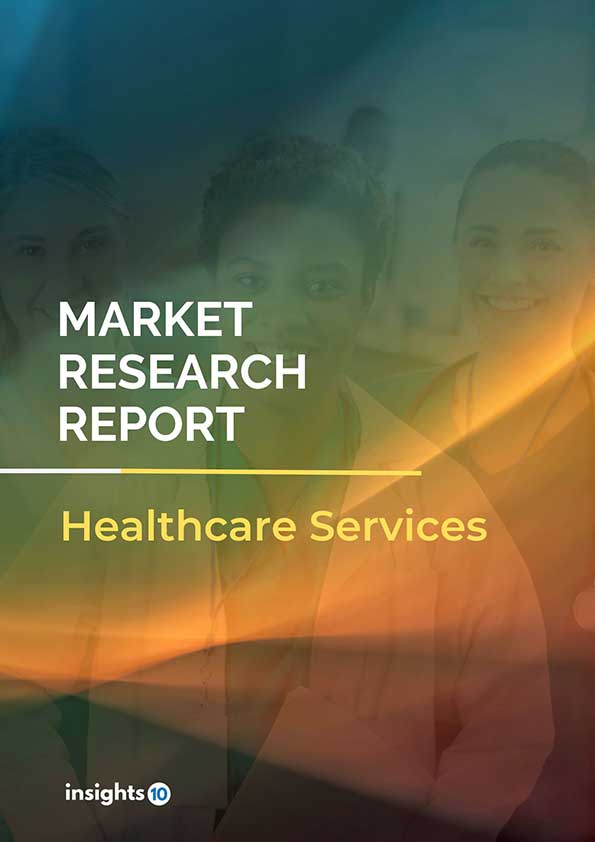Philippines Telemedicine Market Analysis
The Philippines' telemedicine market is projected to grow from $xx Bn in 2022 to $xx Bn by 2030, registering a CAGR of 20.5% during the forecast period of 2022-2030. On the basis of increased digitalization in the healthcare industry, the Philippines' telehealth market is anticipated to experience substantial expansion in the coming years. In the near future, it is projected that a rise in remote consultations, supported by an increase in the incidence of chronic diseases, will contribute to the steady expansion of the Philippines' telehealth business. The key players in the Philippines telemedicine market include telemedicine platforms such as MyDoc, DocNet, KonsultaMD, and HealthTap.
Buy Now

Philippines Telemedicine Market Executive Summary
The Philippines' telemedicine market is projected to grow from $xx Bn in 2022 to $xx Bn by 2030, registering a CAGR of 20.5% during the forecast period of 2022-30.
One of East Asia and the Pacific's most dynamic economies is the Philippines. GDP is expected to have grown by 3.2% in 2021, primarily as a result of rising private domestic consumption and fixed investment. Although the Filipino economy has been recovering since the COVID-19 pandemic outbreak, the recovery has not yet fully taken off because of ongoing downside pressures. The IMF predicts that GDP growth would accelerate to 6.3% in 2022 and 7% in 2023. Strong fundamentals, a competitive workforce, a consistent employment market, steady remittances, and investment in the construction industry are some of the main economic factors. The Philippines' economy is dependent on the processing of food, as well as the manufacturing of cement, iron, and steel, as well as telecommunications. The agriculture sector generated 10.1% of GDP in 2020 and employed 22.8% of the labour force in 2019, according to the most recent data from the World Bank.
In the foreseeable future, double-digit growth forecasts are anticipated for the Philippines Telehealth Market. On the strength of an increase in the adoption of digitalization, the market value is anticipated to outperform in the following six years. The market, which now has a double-digit billion-dollar market value, is forecast to grow significantly during the next ten years, reaching triple-digit revenue values. As a result of changing lifestyles of the urban and suburban population around the world, the government's low reimbursements as a result of cost-shifting to the private payers have increased the burden on hospitals to find better and more expensive medical facilities, especially for the elderly. This has also led to an increase in the costs in the healthcare sector and increased demand for technical assistance in the sector. The telemedicine platform's ability to offer reduced travel times, lower prices, and pooled healthcare professional staffing has made it the perfect invention for the modern era.

Market Dynamics
Market Growth Drivers Analysis
On the basis of increased digitalization in the healthcare industry, the Philippines' telehealth market is anticipated to experience substantial expansion in the coming years. In the near future, it is projected that a rise in remote consultations, supported by an increase in the incidence of chronic diseases, will contribute to the steady expansion of the Philippines' telehealth business. The Philippines' telehealth market is anticipated to experience double-digit growth in the coming years and provide abundant opportunities to potential industrial makers due to the rise in healthcare costs, a boost in technological advancements in the healthcare sector, and efforts to find a solution to the accessibility issues of the healthcare sector in remote areas, which have been a persistent issue in developing economies around the world.
Market Restraints
The Philippines' inadequate internet connectivity in rural regions and its residents' low levels of digital literacy, however, pose serious obstacles to the development of telemedicine in the nation. Only 30% of the population in the Philippines uses computers since many of their schools lack internet connectivity and digital learning opportunities.
Competitive Landscape
Key Players
The key players in the Philippines telemedicine market include telemedicine platforms such as
- MyDoc,
- DocNet,
- KonsultaMD, and
- HealthTap.
Additionally, many hospitals and clinics in the Philippines have also adopted telemedicine technology in order to provide remote consultations to patients.
The Philippine government is also investing in the development of telemedicine infrastructure, which is expected to boost the growth of the market.
Healthcare Policies and Regulatory Landscape
After an organisation worked with the Philippines Department of Health and the National Privacy Commission to offer free telemedicine services, which helped to lower health centre occupancy and stop the spread of COVID-19, the number of teleconsultations increased in the Philippines. Nearly 70,000 virtual sessions have been offered to patients around the nation since the partnership's launch.
In order to address patient concerns, it has employed a medical co-management strategy, in which medical professionals work together to develop a diagnosis and deliver the best care possible. Despite the travel and movement restrictions, we have been able to offer healthcare solutions to people thanks to our capacities, resources, and alliances.
Any medical professional who holds a current licence from the Philippine Professional Regulation Commission is permitted to practise telemedicine on patients who are physically located in the Philippines.
"Physically inspect any individual, and diagnose, treat, operate or prescribe any remedy for human disease, damage, deformity, physical, mental, psychical state or any affliction, real or imaginary," is how the Medical Act of 1959 defines the practice of medicine in Section 10(a). Telemedicine may not be possible until the law is changed because it appears to involve physically inspecting patients. The DOH-NPC joint circular memorandum acknowledges that licenced doctors may practise telemedicine despite the lack of physical contact but notes that in-person consultations are still the gold standard for clinical care.
1. Executive Summary
1.1 Digital Health Overview
1.2 Global Scenario
1.3 Country Overview
1.4 Healthcare Scenario in Country
1.5 Digital Health Policy in Country
1.6 Recent Developments in the Country
2. Market Size and Forecasting
2.1 Market Size (With Excel and Methodology)
2.2 Market Segmentation (Check all Segments in Segmentation Section)
3. Market Dynamics
3.1 Market Drivers
3.2 Market Restraints
4. Competitive Landscape
4.1 Major Market Share
4.2 Key Company Profile (Check all Companies in the Summary Section)
4.2.1 Company
4.2.1.1 Overview
4.2.1.2 Product Applications and Services
4.2.1.3 Recent Developments
4.2.1.4 Partnerships Ecosystem
4.2.1.5 Financials (Based on Availability)
5. Reimbursement Scenario
5.1 Reimbursement Regulation
5.2 Reimbursement Process for Diagnosis
5.3 Reimbursement Process for Treatment
6. Methodology and Scope
Telemedicine Market Segmentation
Component
- Product
- Hardware
- Software
- Others
- Services
- Tele-consulting
- Tele-monitoring
- Tele-education
Modality
The industry is driven by three concepts, which include real-time (synchronous), store and forward (asynchronous), and others comprising remote patient monitoring, etc.
- Store and forward
- Real-time
- Others
Application
- Teleradiology
- Telepsychiatry
- Telepathology
- Teledermatology
- Telecardiology
- Others
Delivery Mode
- Web/Mobile
- Audio/Text-based
- Visualized
- Call centers
Facility
- Tele-hospital
- Tele-home
End-user
- Providers
- Payers
- Patients
- Others
Insights10 will provide you with the reports within 10 key parameters which are:
- Market Overview
- Market Growth Drivers & Restraints
- Epidemiology of Disease Type
- Market Segmentation
- Market Share
- Competitive Landscape
- Key Company Profiles
- Healthcare Policies & Regulatory Framework
- Reimbursement Scenario
- Factors Driving Future Growth
Based on our many years of experience, we believe that these are the parameters that are critical to decision-making for business stakeholders. Our focused approach to developing reports focused on 10 key parameters, enabled us to arrive at the name “Insights10”.

Stage I: Market Data Collection
Primary Interviews: We have developed a network of experts, freelancers, and researchers across countries through which we engage with local experts to gather key data points and assumptions about each market. We also engage regularly with some of the best market research agencies such as Atheneum, GuidePoint, GLG, etc. to conduct surveys and interviews, and build intelligence. We have language translators as a part of our team, who between them can cover 30+ languages allowing us to extract better local insights.
Secondary Data Collection: We have developed strong expertise and experience in secondary data collection methods for developing unique data sets and research material. We gather data from multiple reliable sources to maintain a high level of accuracy and consistency. The market data is analyzed and forecasted using appropriate statistical and coherent models. The report offers an overall analysis of the market size, growth, and market share as well as a segment-level analysis of the specific market. Our report includes precise, to-the-point information related to the overall market, competition, growth drivers, challenges, regulatory updates, and competition.
Data Sources: We have access to multiple highly reliable free and subscription data sources. We have many years of experience to understand which sources are more dependable for what and which to prefer for the reliable and latest information. The key sources of information include the following, but are not limited to:

Stage II: Market Data Analysis and Statistical Model
Market Trends: We generally look at macro parameters and micro indicators. The macro parameters include changes in government policies, demand and supply of the market, government intervention programs, and major market share. The micro indicators are GDP growth, market size, market volume, etc. We also understand nuances specific to each country like the US, Canada, India, Germany, etc., and have worked across 60+ countries and hence not only understand global trends but how these differ by country, how payment models, market structure, cultural parameters, etc. differ in each country.
Market Sizing and Analysis: Our expert data analytics team has created various market forecast models by employing the top-down approach i.e. starting with the large overall market and segmenting different areas and the bottom-up approach i.e. starting with population and epidemiology and rolling up based on spend, etc., estimating the size of the market, and distributing among the geographic and/or product segments.
The top-down approach is mainly used for new product forecasting and the bottom-up approach is used for demand estimation of any product for different countries summed up to form the total market. We are able to round off insights and build stronger forecasts because we always do both these methods and triangulate the final numbers.
The study on the market covers the analysis of the leading geographies such as Asia-Pacific, Africa, Europe, Middle East, North America, and Latin America for the period of 2022 to 2030. The qualitative analysis covers the industry landscape and trends, market opportunities, competitive landscape, and policy and regulatory scenario, and the quantitative analysis covers different market estimates and forecasts.
Data Triangulation & Validation:
Data triangulation of various sources and results of the research are carried out by benchmarking with reliable sources such as industry statistics, statistical databases, and company-level averages, etc.
We make sure to finalize the numbers in alignment with the market research. Firstly, our internal experts ensure thorough validation and checking to ensure accurate and precise analysis and then validation is also done using a multiple-data analysis model. Two-level validation is done and entails the finalization of the report scope and the way of representation pattern.
(1).png)
Stage III: Interpretation and Presentation
Analysis & Interpretation: The information gathered is then analyzed and synthesized. The second series of interviews are done if necessary to check and validate. The future opportunities are analyzed by understanding product commercialization and many other factors. It also comprises the analysis of data discrepancies observed across various data sources. Information procured from secondary and primary results is then, interpreted by considering the following parameters: (a partial list)
- Establishing market drivers and trends
- Analyzing the regulatory landscape to understand future growth
- Market Segment based analysis to obtain revenue/volume
- Analyzing current needs and determining penetration to estimate the market
Insights: Our reports deliver actionable insights backed with supporting facts and figures to assist you in achieving exemplary growth. Our in-depth analyses are interspersed with relevant insights and statistics to offer an executive-level view of a given market. The description helps in correlating many minor factors affecting the market and their impact on the different segments within the market.
Data curated from the analysis and interpretation are drawn to portray all in one consolidated report.
Presentation & Reporting: The market research report is presented in different forms such as charts by using a scientific approach for easy understanding. Historic, current, and future analysis is provided for each market in terms of both value and volume. The size of the market is interpreted in the US Dollar value and the respective unit, based on the product, for volume consumption.
The foreign exchange rates are calculated on the respective dates and for the respective regions covered in the study.
To request a free sample copy of this report, please complete the form below.
We value your inquiry and offer free customization with every report to fulfil your exact research needs.
This report addresses
- Intelligent insights to take informed business decisions
- Qualitative, acute and result oriented market analysis
- Market size and forecasts from 2022 to 2030
- Opportunities for expansion and in-depth market analysis
- Segmentation and regional revenue forecasts
- Analysis of the market share and competitive landscape
- Strategic Recommendations to chart future course of action
- Comprehensive Market Research Report in PDF and PPT formats
Need more?
- Ask our analyst how this study was put together to learn more
- Discuss additional requirements as part of the free customisation
- Add more countries or regions to the scope
- Get answers to specific business questions
- Develop the business case to launch the product
- Find out how this report may influence your business revenue



